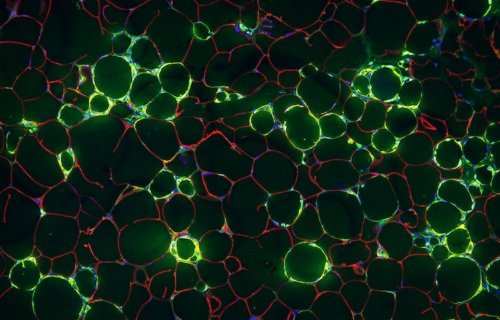DALLAS, Texas — Obesity can be a gateway to many other health conditions including heart disease and diabetes. Part of the problem is the inflammation obesity causes. As fat cells are loaded down with excess fat, the tissue around them becomes inflamed, but scientists haven’t figured out why this happens. Now, researchers from UT Southwestern say they have discovered the cells which trigger this reaction in mice. Their study may lead to a way to treat obesity and the illnesses it causes.
“The inflammation of fat cells in obese individuals is linked to many of the comorbidities we associate with being overweight – cancer, diabetes, heart disease, and infection,” says study leader and associate professor of internal medicine Rana Gupta, Ph.D., in a university release. “By identifying these cells, we’ve taken a step toward understanding some of the initial events that contribute to that inflammation.”
The study finds our bodies store excess calories inside fat tissue (or white adipose tissue) when we overeat. When WAT suffers too much stress, fat cells start to die off and the immune system activates its inflammatory reaction. How the body goes from overstuffed fat cells to inflamed tissue however, has remained a mystery.
While other studies focus on signaling molecules in the fat and the immune cells in WAT, the UT Southwestern team turned their attention to the blood. Gupta’s group looked at blood vessels which travel into the white adipose tissue as the probable cause of inflammation.
Finding the smoking gun for inflammation
Gupta and this team discovered a new type of cell which surrounds the blood vessels in mice in 2018. They call this lining an adipose progenitor cell (APC), or a parent cell which generates mature fat cells. These particular APCs however, produce signals which trigger inflammation. Gupta’s team dubbed these new cells fibro-inflammatory progenitors (FIPs).
The new study now looks at how FIPs work directly with creating harmful inflammation throughout the fat tissue. In an experiment with young male mice, researchers put the animals on a high-fat diet to see how FIPs react to the change in eating habits.
In just one day, researchers discovered that FIPs rapidly increase the production of inflammatory molecules in the body. After a month on the high-fat diet, the study finds mice have significantly more FIPs in their bodies compared to normal APCs.
“This is the first study to demonstrate that these cells play a very active, early role in being gatekeepers of inflammation in fat tissue,” Gupta reports.
Will the results hold true for humans?
To prove that FIPs play a key role in harmful inflammation, scientists removed a critical gene from the cells, called Tlr4. After another five months on the high-fat diet, the mice without Tlr4 gained the same amount of weight and fat as their peers. The one difference the study reveals is that mice with no Tlr4 gene did not have high levels of inflammation.
Study authors add that mice without Tlr4 have inflammatory molecule levels in their adipose tissue which are closer to levels typical in mice on low-fat diets. Gupta’s team then uncovered that increasing levels of another signaling molecule, ZFP423, inside FIPs can also improve inflammation in the fat cells.
“It looks like ZFP423 could be an important brake in terms of slowing the inflammatory signals in these cells,” Gupta explains. “Of course, it remains to be seen if that’s true in humans as well as mice.”
The UT Southwestern team is now planning to examine which parts of the high-fat diet trigger the inflammatory process in FIPs. Researchers will also be looking to see if the results hold true in humans dealing with obesity too.
The study appears in the journal Nature Metabolism.
